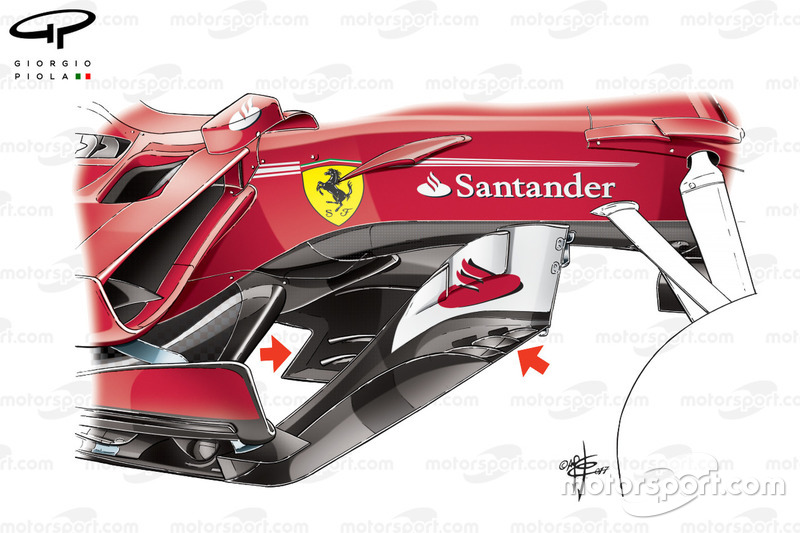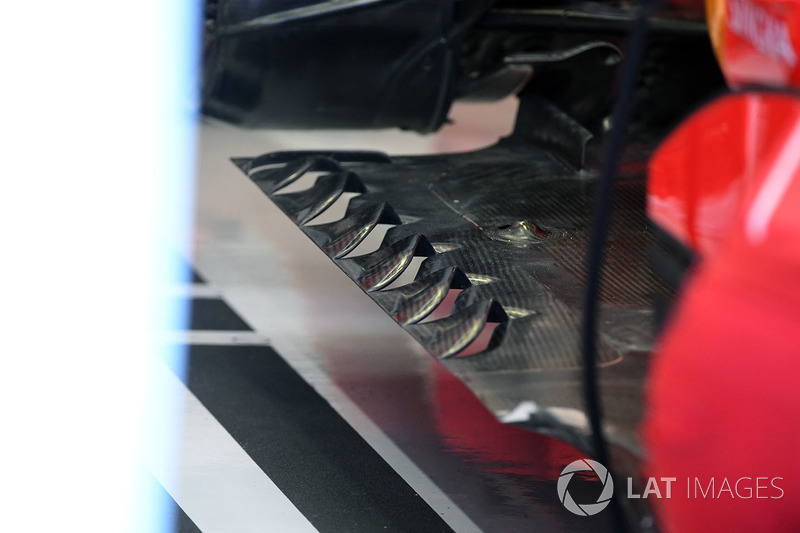Analysis: How Ferrari turned update headache into Hungary glory
Ferrari arrived at the Hungarian Grand Prix well aware that this was a crunch race for its Formula 1 title ambitions.

Photo by: Zak Mauger / Motorsport Images
For having not won since Monaco, and seen rivals Mercedes outscore it handsomely in the four races since then, the pressure was on to prove that the momentum had not been sucked out of its campaign.
To help its chances, it elected to bring to the Hungaroring a pretty hefty update to its car to help maximise its high-downforce strengths on a track that was always going to suit it better. (The details of these changes are analysed below)
But its opening day was inconclusive, and it was Red Bull that appeared to be in control, as Daniel Ricciardo topped both sessions with an upgraded RB13.
At Ferrari, Friday's results has been mixed – and neither Sebastian Vettel nor Kimi Raikkonen felt too comfortable with the car as they struggled for balance on the rapidly-changing track.
It wasn't the dominant Friday that they perhaps could have hoped for.
Vettel said afterwards: "We have tried to play around a little bit with the car and with the set-up. We tried some things, which I think they gave us direction and we should know what to do tomorrow. We need to make a step forward."
While Vettel was uttering those words, works was already underway to work out what had been going on – and why an update that promised so much on paper didn't appear to translate so easily to the track.
In fact, Ferrari test driver Antonio Giovinazzi had put behind him his red flag in the Haas in FP1 and was already flying back to Maranello for some extra work.
His role there was an important late-night shift in the simulator – as is regularly done at European races – to get to the bottom of why things had not been so good on track with the updates.
The focus in particular was of getting the balance right, because the data showed the downforce was there with the individual parts, but the drivers could not extract the full performance because the way they interacted did not click in delivering a feeling of confidence for the drivers.
Giovinazzi pulled an all-nighter to keep running through things and help deliver the answers – which was in simple essence a well honed set-up to help perfect the SF70H's aero balance, so that all the performance from the individual parts could be unleashed.
By the time that Vettel and Raikkonen emerged from the pits at the Hungaroring on Saturday morning, the car was transformed and there was no looking back.
Ferrari delivered a dominant 1-2 on the grid and the same result in the race, even if its performance was compromised by the steering problem that Vettel suffered.
But it was clear that Giovinazzi had played an important role in turning around the Hungary weekend and getting Ferrari back in to the game ahead of the summer break.
On Sunday morning, Ferrari president Sergio Marchionne notably singled out Giovinazzi for praise – and accepted the young Italian looking a bit bleary eyed on his return to the Hungaroring.
"He did a great job," said Marchionne. "I was not there, but they explained to me that he worked all night to avoid the mistakes they did in balancing the car. I am very pleased with him: he came back here and you see that he's tired."
Ferrari's changes in detail
By Matt Somerfield
Ferrari knew that Hungary would play to the strengths of its car, but it ensured that there was further progress with a pretty hefty update.
The bargeboard area of the car is perceived as the one to offer the most low-hanging fruit this season, as the designers have a significant amount of freedom compared to what they've been used to since 2009.
As such we're seeing improvements made in this area all the time, as the teams look to hone in on more efficient designs. For Ferrari that challenge has been met by the introduction of three extra slots in the footplates leading edge (arrowed), which have been angled to suit the curvature of the vertical element behind.
Meanwhile, the triangulated splitter extensions that reside at floor level behind the barge boards have also been revised. Two curved slots have been added to the leading edge of the section, whilst the enclosed hole that previously resided a little further back has been deleted.
The floor ahead of the rear tyre was also revised as the team looked to maximise performance, introducing an extra two slots to deal with the issue of tyre squirt – where airflow spilt off the side of the tyre into the path of the diffuser.
Be part of Motorsport community
Join the conversationShare Or Save This Story
Subscribe and access Motorsport.com with your ad-blocker.
From Formula 1 to MotoGP we report straight from the paddock because we love our sport, just like you. In order to keep delivering our expert journalism, our website uses advertising. Still, we want to give you the opportunity to enjoy an ad-free and tracker-free website and to continue using your adblocker.






















Top Comments